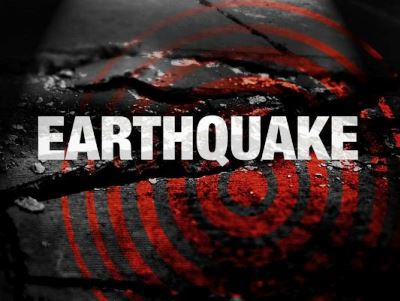
A 3.5 magnitude earthquake struck today just before 3 p.m., 3 km southwest of Yorba Linda, CA according to the U.S. Geological Survey. The quake struck at a depth of 5.5 miles. It was followed by two aftershocks of lesser strength.
If a large earthquake happens, protect yourself right away, according to Ready.gov:
- If you are in a car, pull over and stop. Set your parking brake.
- If you are in bed, turn face down and cover your head and neck with a pillow.
- If you are outdoors, stay outdoors away from buildings.
- Do not get in a doorway.
- Do not run outside.
Drop: Wherever you are, drop down on to your hands and knees. If you’re using a wheelchair or walker with a seat, make sure your wheels are locked and remain seated until the shaking stops.
Cover: Cover your head and neck with your arms. If a sturdy table or desk is nearby, crawl underneath it for shelter. If no shelter is nearby, crawl next to an interior wall (away from windows). Crawl only if you can reach better cover without going through an area with more debris. Stay on your knees or bent over to protect vital organs.
Hold on: If you are under a table or desk, hold on with one hand and be ready to move with it if it moves. If seated and unable to drop to the floor, bend forward, cover your head with your arms and hold on to your neck with both hands.
Prepare Before an Earthquake
The best time to prepare for any disaster is before it happens.
- Practice Drop, Cover, and Hold On with family and coworkers.
- Secure heavy items in your home like bookcases, refrigerators, televisions and objects that hang on walls. Store heavy and breakable objects on low shelves.
- Create a family emergency communications plan that has an out-of-state contact. Plan where to meet if you get separated.
- Make a supply kit that includes enough food and water for at least three days, a flashlight, a fire extinguisher and a whistle.
- Consider obtaining an earthquake insurance policy. A standard homeowner’s insurance policy does not cover earthquake damage.
- Consider making improvements to your building to fix structural issues that could cause your building to collapse during an earthquake.
Stay Safe After an Earthquake
If an earthquake has just happened, there can be serious hazards such as damage to the building, leaking gas and water lines, or downed power lines.
- Expect aftershocks to follow the main shock of an earthquake.
- Check yourself to see if you are hurt and help others if you have training. Learn how to be the help until help arrives.
- If you are in a damaged building, go outside and quickly move away from the building. Do not enter damaged buildings.
- If you are trapped, protect your mouth, nose and eyes from dust. Send a text, bang on a pipe or wall or use a whistle instead of shouting to help rescuers locate you.
- If you are in an area that may experience tsunamis, go inland or to higher ground immediately after the shaking stops.
- Text messages may be more reliable than phone calls.
- Once you are safe, listen to local news reports for emergency information and instructions via battery-operated radio, TV, social media or from cell phone text alerts.
- Be careful during post-disaster cleanup of buildings and around debris. Do not attempt to remove heavy debris by yourself. Wear protective clothing, including a long-sleeved shirt, long pants, work gloves and sturdy, thick-soled shoes during cleanup.
- Register on the American Red Cross “Safe and Well” website so people will know you are okay.
Associated Content
- Earthquake Informational Poster (PDF)
- How to Prepare for an Earthquake (PDF)
- How to Prepare Your Organization for an Earthquake (PDF)
- Earthquake Preparedness: What Every Childcare Provider Should Know (PDF)
- When the Earth Shakes (Video)
- The Great ShakeOut: Earthquake Drills (Link)
- U.S. Geological Survey Earthquake Hazards Program (Link)
- American Red Cross (Link)
- Earthquake Country Alliance (Link)
- National Science Foundation (Link)
- National Institute of Standards and Technology (Link)
Click here to find out how to buy California earthquake insurance.
